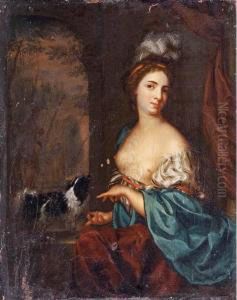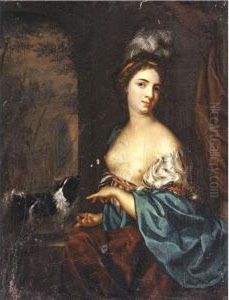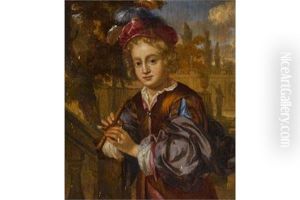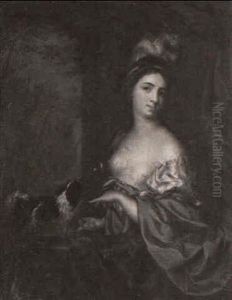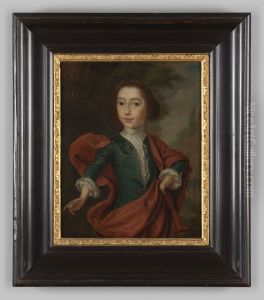Margaretha Wulfraet Paintings
Margaretha Wulfraet was a Dutch Golden Age painter, born in 1678 in Middelburg, the Netherlands. Her life and career offer a fascinating glimpse into the world of female artists during a period dominated by male painters. Unlike many of her contemporaries, Wulfraet managed to carve out a space for herself in the art world of the 17th and 18th centuries, a testament to her skill and determination.
Wulfraet's work primarily consisted of portraits, a genre that was highly popular and respected during her time. She was known for her detailed and sensitive portrayal of her subjects, capturing not just their physical appearance but also hinting at their personality and status. Her ability to render texture and fabric in her paintings demonstrated her meticulous attention to detail and her mastery over the medium.
Despite the challenges faced by women in the arts during this period, Wulfraet received recognition for her talent. It is believed that she was taught by her father, who was also a painter, which was a common way for women to receive art education at the time. Unfortunately, like many female artists of her era, Margaretha Wulfraet's work was overshadowed by her male counterparts, and she did not achieve the same level of fame as some of her contemporaries.
Margaretha Wulfraet passed away in 1744, leaving behind a modest but compelling oeuvre that reflects her skill and the unique perspective she brought to Dutch Golden Age painting. While her contributions may not have been widely acknowledged during her lifetime or in the centuries immediately following her death, recent scholarship has begun to give Wulfraet and other female artists of her time the recognition they deserve. Her paintings, when they appear, are studied for their contribution to the understanding of gender, society, and the arts in the Dutch Golden Age.
